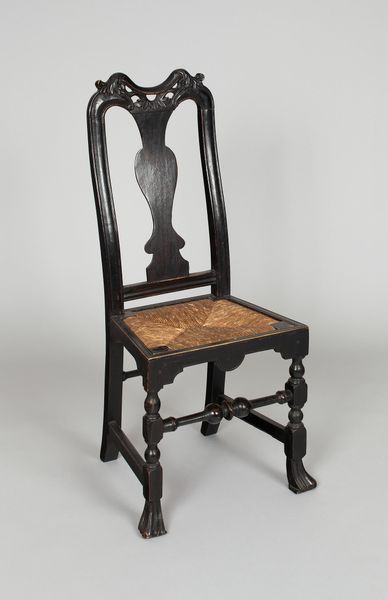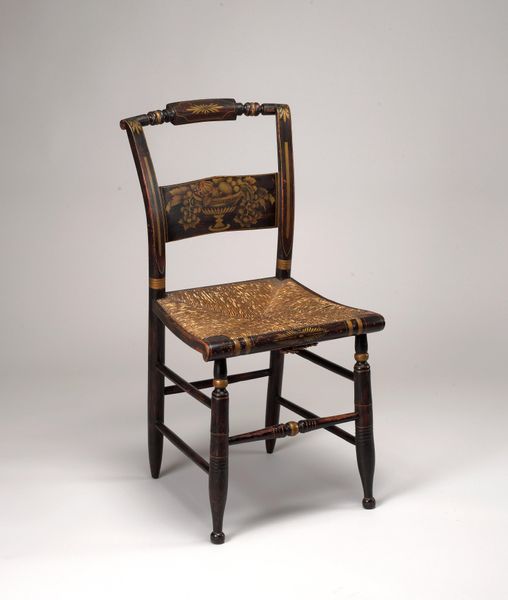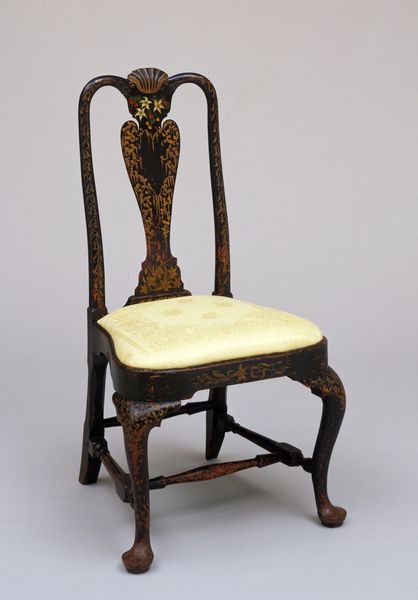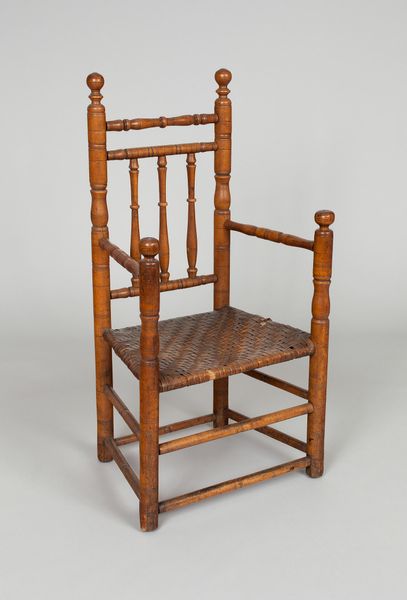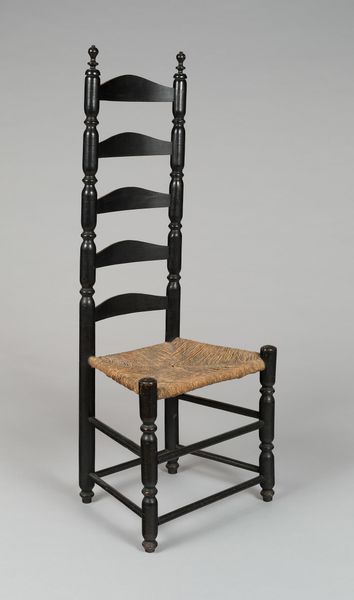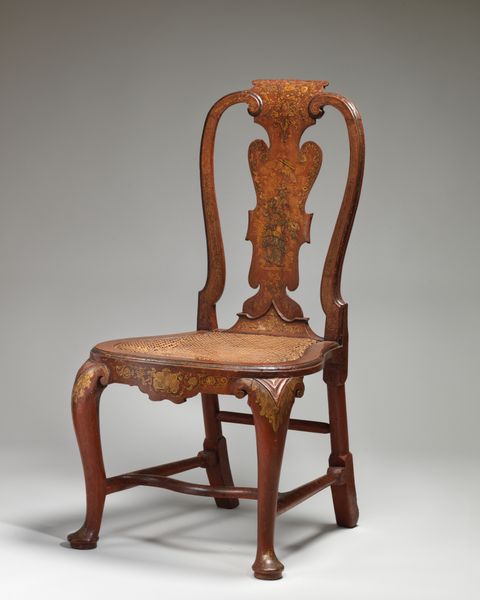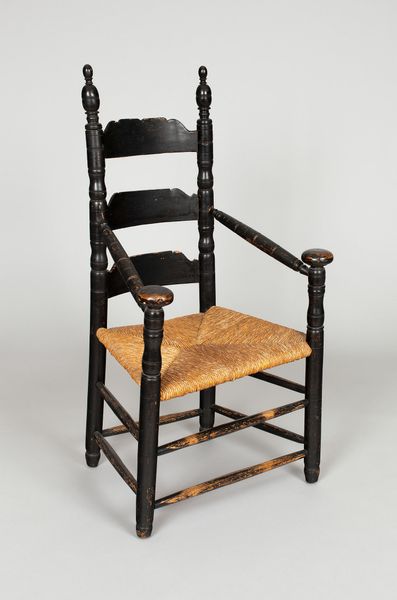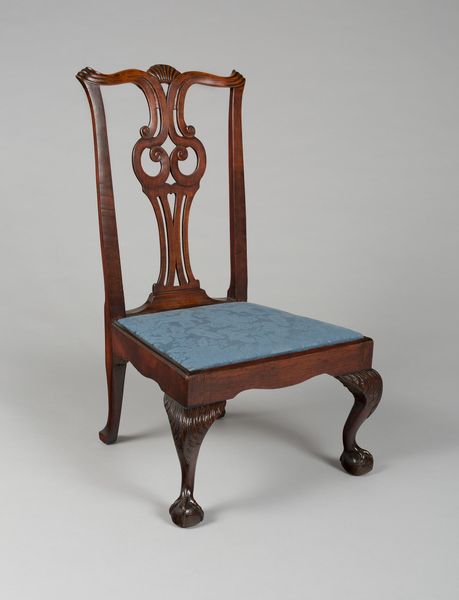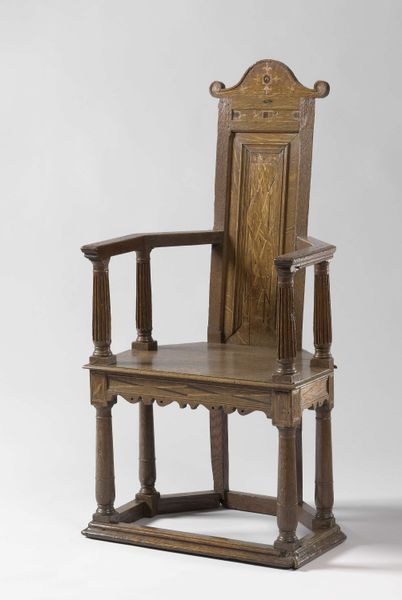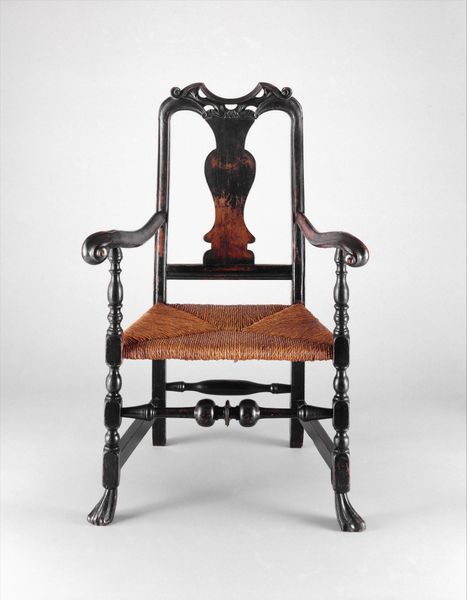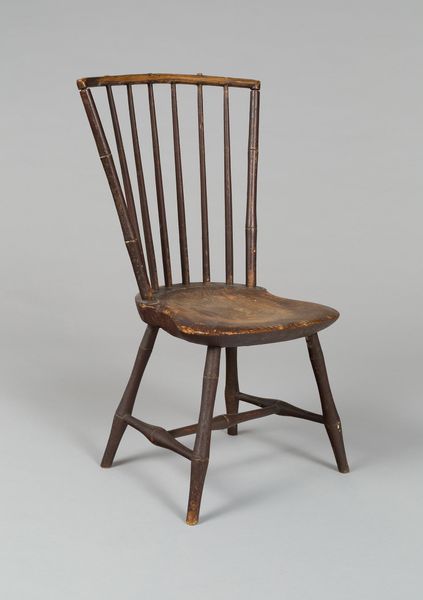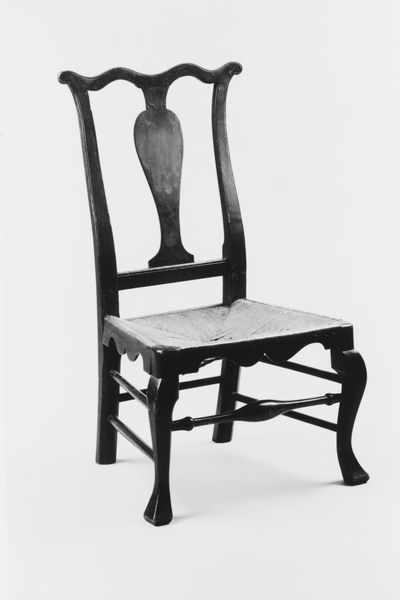
carving, wood
#
carving
#
sculpture
#
furniture
#
geometric
#
united-states
#
wood
#
history-painting
#
decorative-art
Dimensions: 41 5/8 × 19 1/4 × 15 1/2 in. (105.73 × 48.9 × 39.37 cm) (approx.)
Copyright: Public Domain
This East Windsor side chair is attributed to Timothy Loomis III, crafted sometime in the late 18th century. During this era, furniture wasn't just functional; it reflected a family's status and taste. Loomis, as a craftsman, occupied a unique position, balancing artistry with the demands of a burgeoning economy in colonial America. Consider the heart-shaped detail at the chair's crest. It could symbolize love, home, and family, values deeply embedded in the social fabric. These chairs often furnished spaces where pivotal family and community interactions unfolded. They were witness to conversations, decisions, and everyday moments that shaped lives. Imagine the hands that wove the seat, the bodies that sat upon it. Reflect on the silent stories held within its frame. This chair is not merely an object; it's a vessel carrying the echoes of lives lived and histories shared.
Comments
minneapolisinstituteofart almost 2 years ago
⋮
This chair boasts some distinctive decoration. The vase-shaped splat, or center back section, has a cutout heart. The undulating top rail features a “pagoda” design at the center and carved “ears” on each side. The flat-bottomed, carved pad feet and curving back rail are the details of an ambitious craftsman, a third-generation joiner from the Connecticut River valley near Hartford. The chair’s original owner was David Ellsworth (1709–82), a selectman of his New England town. In 1745 he commanded a company on behalf of Britain at the siege of Louisbourg, on the French-held Cape Breton Island in Nova Scotia, in what is now Canada. This was a decisive British victory in what was known in the North American colonies as King George’s War, part of the War of the Austrian Secession, which raged nearly worldwide from 1740 to 1748.
Join the conversation
Join millions of artists and users on Artera today and experience the ultimate creative platform.
